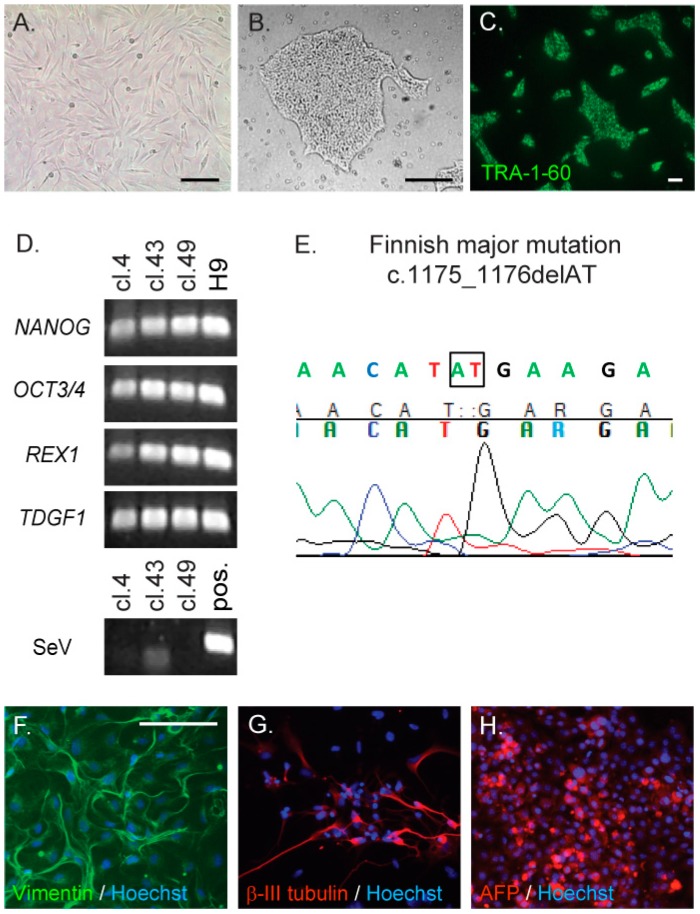Figure 1.
Generation and characterisation of iPS cell lines derived from the CLN5 (ceroid lipofuscinosis, neuronal, 5) patient’s fibroblasts. The CLN5 patient’s fibroblasts (A) were reprogrammed to induce pluripotent stem cells (iPSCs) using a Sendai virus-mediated delivery of the four Yamanaka factors. CLN5Y392X iPSC clones were collected on the basis of colony morphology ((B) a representative image shown); and the colonies were stained for TRA-1-60, a specific stem cell marker ((C) shown for one representative clone); RT-PCR was used to detect the expression of endogenous stem cell marker genes, NANOG, OCT3/4, REX1 and TDGF1, and the loss of virus expression confirmed by using primers specific for Sendai virus (SeV) ((D) shown for the three characterised CLN5Y392X iPSC clones (cl.) and a positive control hES cell line, H9. Sendai virus-infected fibroblasts were used as a positive control (pos.) in analysis of Sendai viral expression); The presence of the original CLN5 disease causing mutation in each analysed CLN5Y392X iPSC clone was confirmed by sequencing ((E) illustrated from one representative clone, nucleotides in the box represent second and third nucleotides of the codon TAT, and are missing in mutated DNA); Pluripotency of the three characterised CLN5Y392X iPSC lines was verified by their ability to differentiate into the three germ layers, mesoderm, ectoderm and endoderm, detected by staining with vimentin (F), β-III tubulin (G) and α-fetoprotein (AFP, (H)) antibodies, respectively (shown for one representative clone with nuclear staining shown in blue); Bar 100 µm (A,F–H), 300 µm (B) and 50 µm (C).

